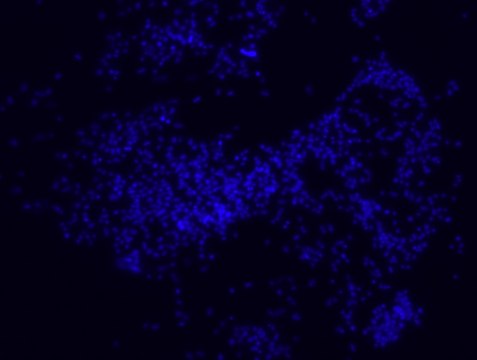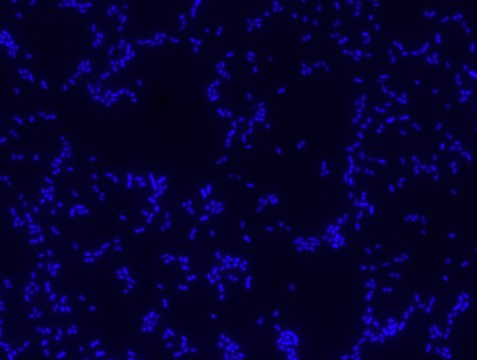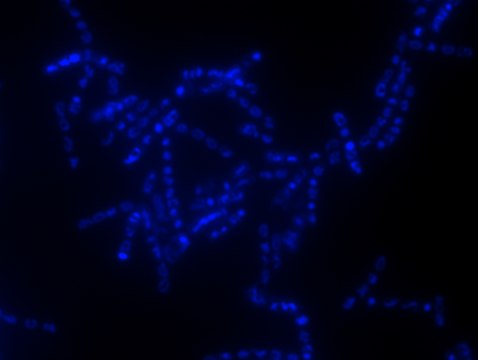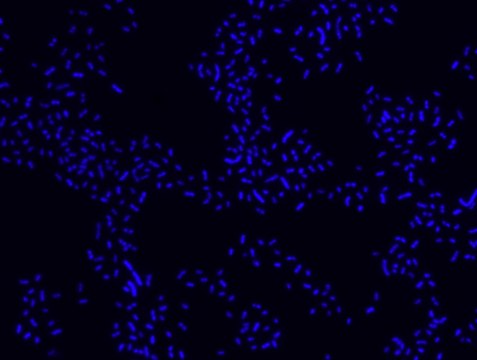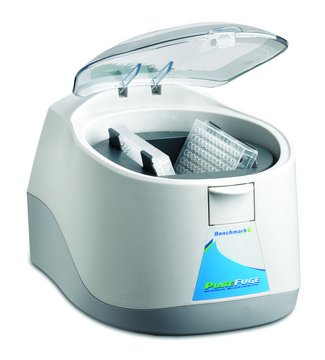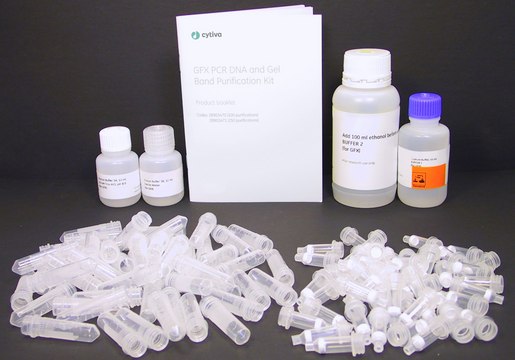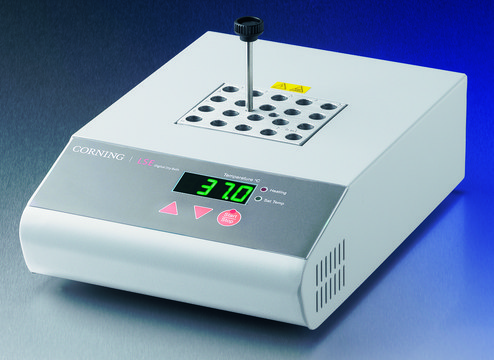推荐产品
一般描述
Fluorescent in Situ Hybridization technique (FISH) is based on the hybridization of fluorescent labeled oligonucleotide probe to a specific complementary DNA or RNA sequence in whole and intact cells. Microbial FISH allows the visualization, identification and isolation of bacteria due to recognition of ribosomal RNA also in unculturable samples. FISH technique can serve as a powerful tool in the microbiome research field by allowing the observation of native microbial populations in diverse microbiome environments, such as samples from human origin, microbial ecology and plants. Prokaryotic single cell life forms are divided into two domains, called Bacteria and Archaea, originally categorized as Eubacteria and Archaebacteria. However both terms, Eubacteria and Bacteria are still being used in microbiology. FISH technique was successfully used to identify different bacteria with the universal bacterial probe in various samples such as, pure culture (as described in the figure legends), blood cultures, periapical tooth lesions, saliva, biofilms from voice prostheses, subgingival biofilm, aortic wall tissue, buccal epithelial cells, pure culture and cell culture, intestine tissue embedded in paraffin, necrotizing fasciitis and pure culture, colon sections embedded in paraffin, cancer tissues, environmental samples and gut of the medicinal leech. The probe can also be used for combined technique of FISH and Flow cytometric analysis. It is strongly recommended to include positive and negative controls in FISH assays to ensure specific binding of the probe of interest and appropriate protocol conditions. We offer positive (MBD0032/33) and negative (MBD0034/35) control probes, that accompany the specific probe of interest.
应用
Two supplementary FISH (fluorescence in situ hybridization) probes to the Eubacteria FISH probe (EUB-388, MBD0033), that will cover additional bacterial phyla not included in the coverage of the original probe, e.g. Planctomycetota and Verrucomicrobia . It is recommended to use the probes in the kit either separately, or in addition to the Eubacteria FISH probe (MBD0033) in equimolar amounts, and 20% formamide for hybridization buffer.
特点和优势
- Visualize, identify, and isolate bacteria cells
- Observe native bacteria cell populations in diverse microbiome environments
- Specific, sensitive, and robust identification of bacteria cells in mixed microorganism population
- Specific, sensitive, and robust identification even when bacteria are in low abundance in the sample
- FISH can complete PCR-based detection methods by avoiding contaminant bacteria detection
- Provides information on bacteria morphology and allows to study biofilm architecture
- Identify various bacteria in environmental and clinical samples such as formalin-fixed paraffin-embedded (FFPE) samples, blood cultures, saliva and more
- The ability to detect bacteria in its natural habitat is an essential tool for studying host-microbiome interaction
储存分类代码
12 - Non Combustible Liquids
WGK
WGK 1
闪点(°F)
Not applicable
闪点(°C)
Not applicable
法规信息
新产品
从最新的版本中选择一种:
Fluorescence in situ hybridization (FISH): History, limitations and what to expect from micro-scale FISH?
Micro and Nano Systems Letters, 1, 15-24 (2018)
H Daims et al.
Systematic and applied microbiology, 22(3), 434-444 (1999-12-20)
In situ hybridization with rRNA-targeted oligonucleotide probes has become a widely applied tool for direct analysis of microbial population structures of complex natural and engineered systems. In such studies probe EUB338 (AMANN et al., 1990) is routinely used to quantify
Alexander P Young et al.
PeerJ, 8, e8806-e8806 (2020-03-29)
RNA-fluorescence in situ hybridization (FISH) is a powerful tool to visualize target messenger RNA transcripts in cultured cells, tissue sections or whole-mount preparations. As the technique has been developed over time, an ever-increasing number of divergent protocols have been published.
Elsa Prudent et al.
FEMS microbiology reviews, 43(1), 88-107 (2018-11-13)
Many obligate or facultative intracellular bacteria pose a critical problem in clinical microbiology diagnosis as a result of their fastidious growth or lack of growth in conventional culture media. Molecular diagnosis is based on the analysis and demonstration of nucleic
Michael Wagner et al.
Current opinion in microbiology, 6(3), 302-309 (2003-07-02)
Fluorescence in situ hybridisation with rRNA-targeted nucleic acid probes can be used to directly identify microorganisms within complex samples in a few hours and therefore has widespread application in environmental and medical microbiology. The past year has seen significant methodological
我们的科学家团队拥有各种研究领域经验,包括生命科学、材料科学、化学合成、色谱、分析及许多其他领域.
联系技术服务部门